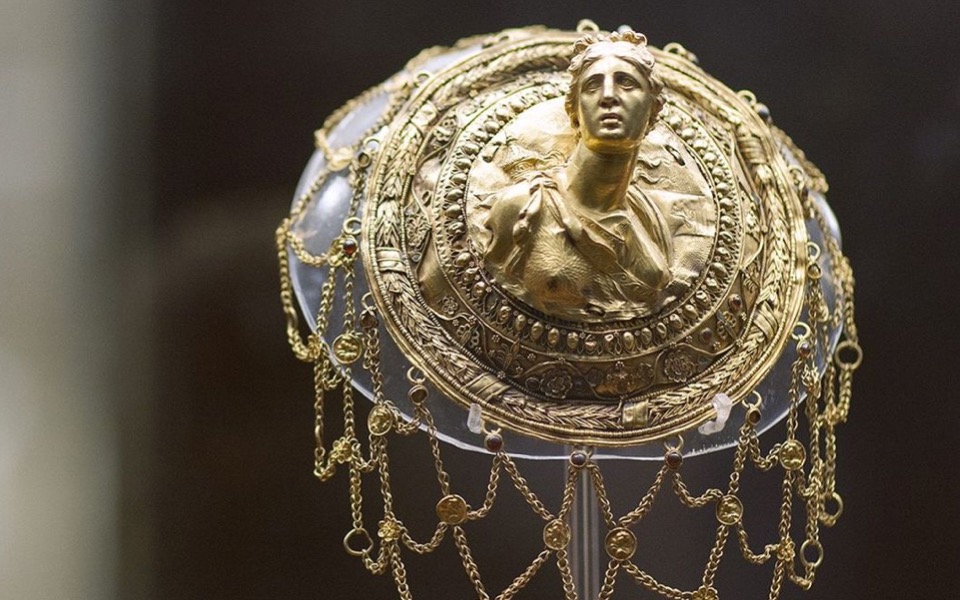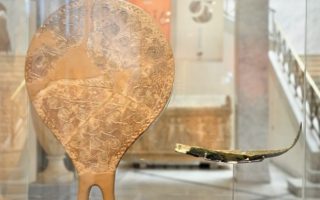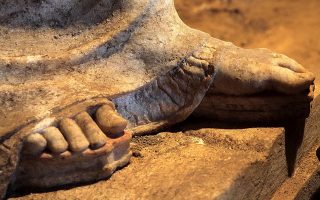Addressing the challenges of the age-old craft of jewelry making

Few man-made creations convey a sense of perpetuity as much as jewelry. Earlier this month, the Athens Silver & Goldsmiths Association organized a tour of the National Archaeological Museum in Athens, which holds one of the most important collections of ancient Greek jewelry in the world. The tour was followed by a discussion about the 6,000-year-old history of Greek jewelry, and the issues the sector faces today.
In the museum, the ancient Greek adornments from the Minoan, Mycenaean, Classical and Hellenistic periods still looked brand-new. Forged or cast, they were then decorated using an abundance of techniques, some of which are still used today.
“It is said that humans wore jewelry made of shells, stones, bones, animal claws or wood before they even started building their homes or cultivating the land. The earliest piece of jewelry is estimated to date back to between 80,000 and 120,000 years ago. Wearing these adornments was a way for humans to differentiate themselves from other creatures, which proves they were conscious of their own existence. A jewel was a talisman, a distinctive object that represented honor and power,” Dolly Boucoyannis of the Athens Silver & Goldsmiths Association, told Kathimerini.
“Since ancient times, jewelry making has been a very protected and closed activity. Workshops were located inside palaces to prevent theft and allow goldsmiths to focus on their work. Today in Greece, workshops have mainly developed into small family businesses that have trouble staying up to date and lack experience in regard to new developments in the sector worldwide. They rarely collaborate or partner up to participate in cluster programs backed by European funds, for example,” she added.
“Still, despite the unfavorable context, Greek jewelry has progressed. Since the 1960s, a new branch of jewelry has emerged alongside traditional goldsmithing, the craft of ‘art jewelry.’ In the 70s and 80s, jewelry created by artists and young people from different backgrounds – often using cheap materials – marked the profession’s evolution. Tourism also had a positive impact on the sector, as it brought jewelers into contact with people who inspired them to create brand-new designs and pieces. Today there is a gap between the few Greek jewelers with a strong presence internationally on one hand, and, on the other, the workshops in Greece, the main part of the production force, which are struggling to survive. With small businesses fading away and not being able to respond to the upsurge in tourism, Greece appears to be becoming a marketplace for jewelry that is increasingly being imported from China, Turkey and other countries,” Boucoyannis commented.
The members of the Athens Silver & Goldsmiths Association are requesting that the art and craft of jewelry making be integrated into higher education programs, particularly at the School of Fine Arts. They are also asking for Greek jewelry to be officially recognized as part of the country’s cultural heritage, and for its techniques to be included in UNESCO’s World Heritage digital platform.
One of the biggest issues faced by goldsmiths is the imposition of a special luxury tax on items worth more than 1,000 euros and on imported raw materials such as gemstones, pearls, corals etc; this increases the selling price and reduces the competitiveness of the goods. Goldsmiths want to eliminate this tax, highlighting the fact that a piece of jewelry which costs 2,500 euros in Greece would be sold for 2,000 in Italy and 1,600 in Turkey. They also insist on protecting their small community, which is being threatened by the rise of Airbnb apartments in the historical center of Athens.
Sofia Avgerinou-Kolonias, a professor at the National Technical University of Athens, said: “The old faceless buildings of the city center used to host hundreds of small and medium-sized jewelry businesses and small workshops, which are the ideal size for Airbnbs. But these businesses survive despite being in crisis. Jewelry items are objects of culture, closely linked to people’s joys and sorrows, to events in Greek society. Jewelry production is divided into tasks: Some carve, some set stones and some polish. It is like any big assembly line. These social and productive chains are keeping the workshops alive. The industry would collapse if they broke. Organizations that are involved in the sector can help these businesses to stay afloat, organizing exhibitions, or themed city tours. Jewelry is a constituent part of Athens’ identity.”





